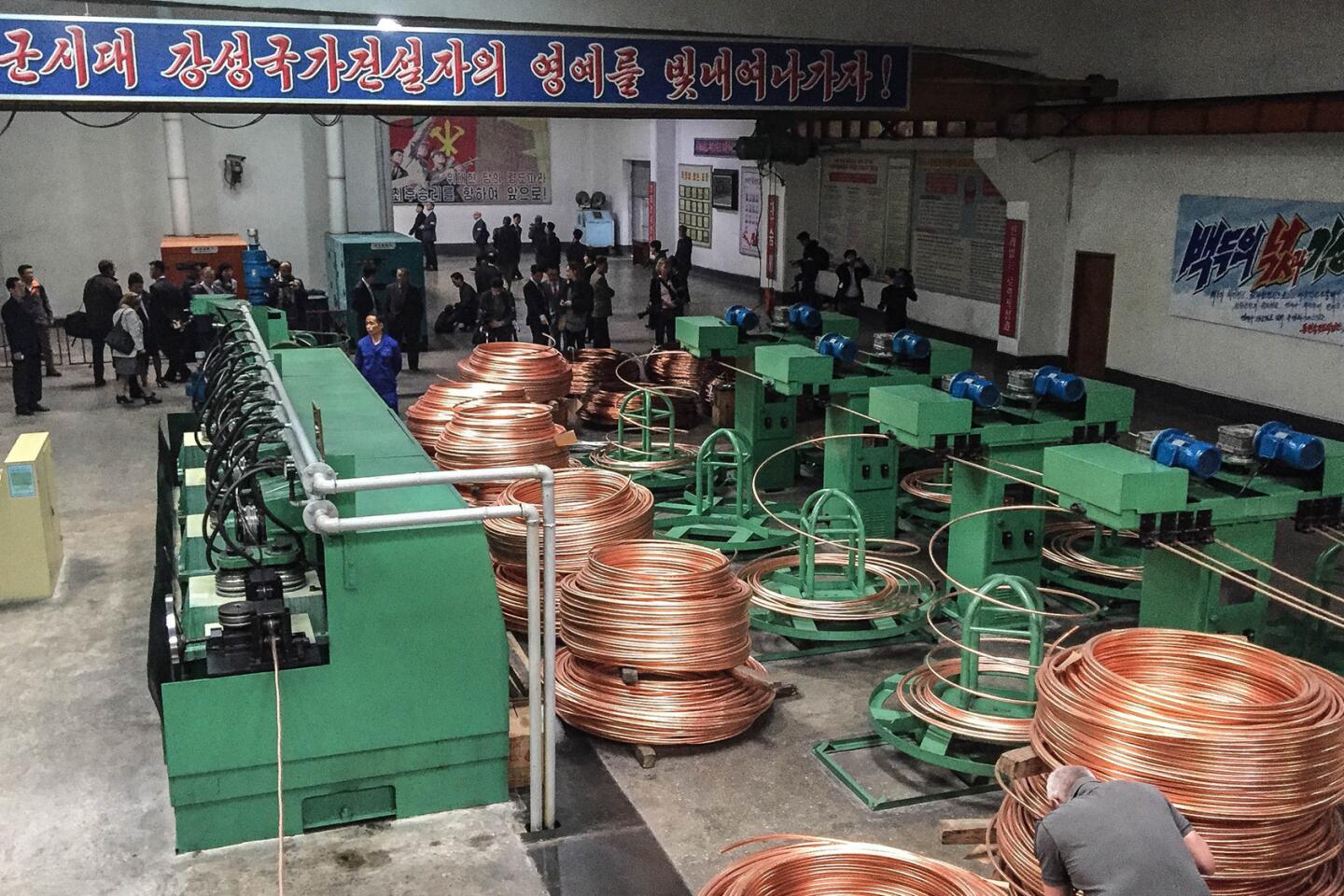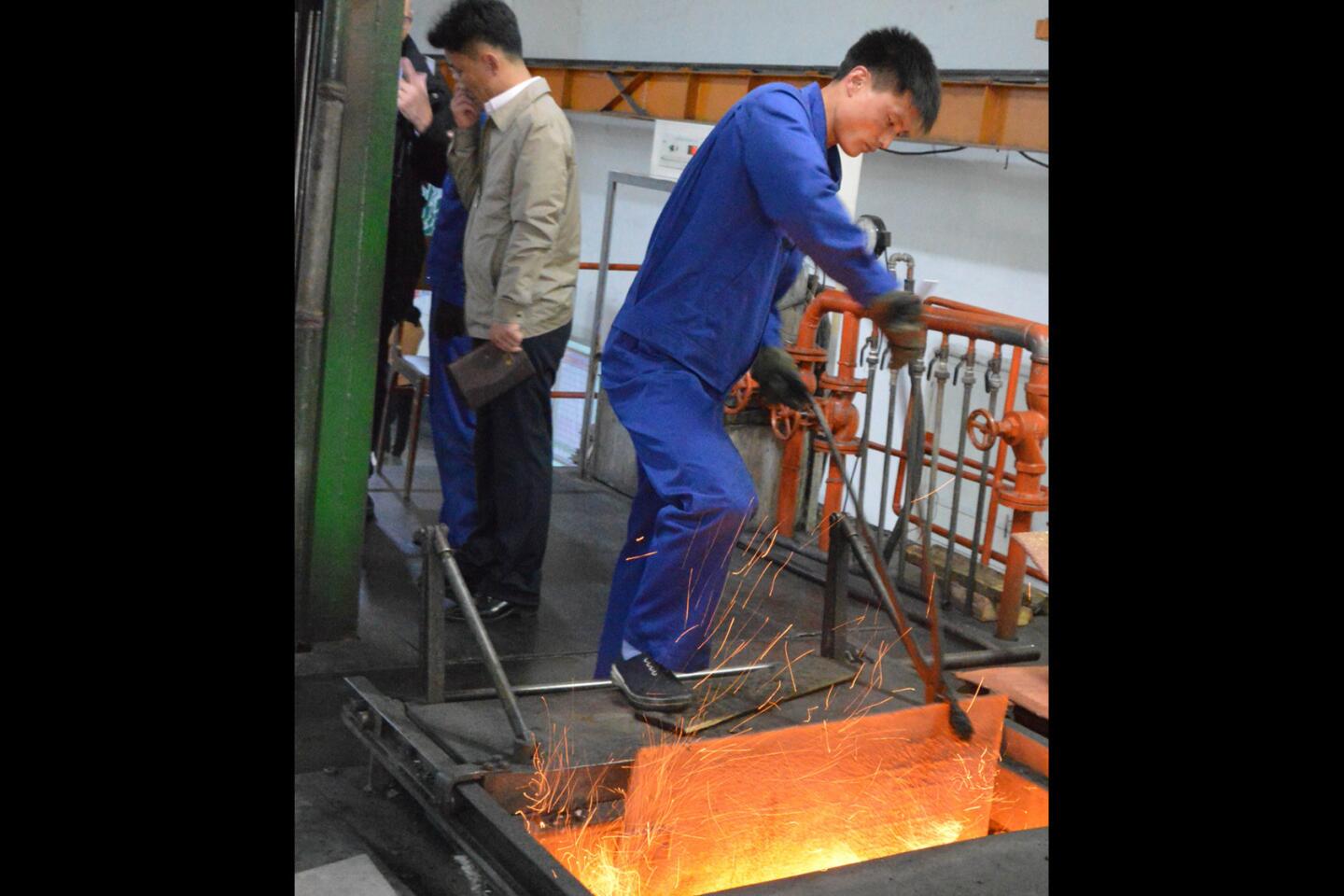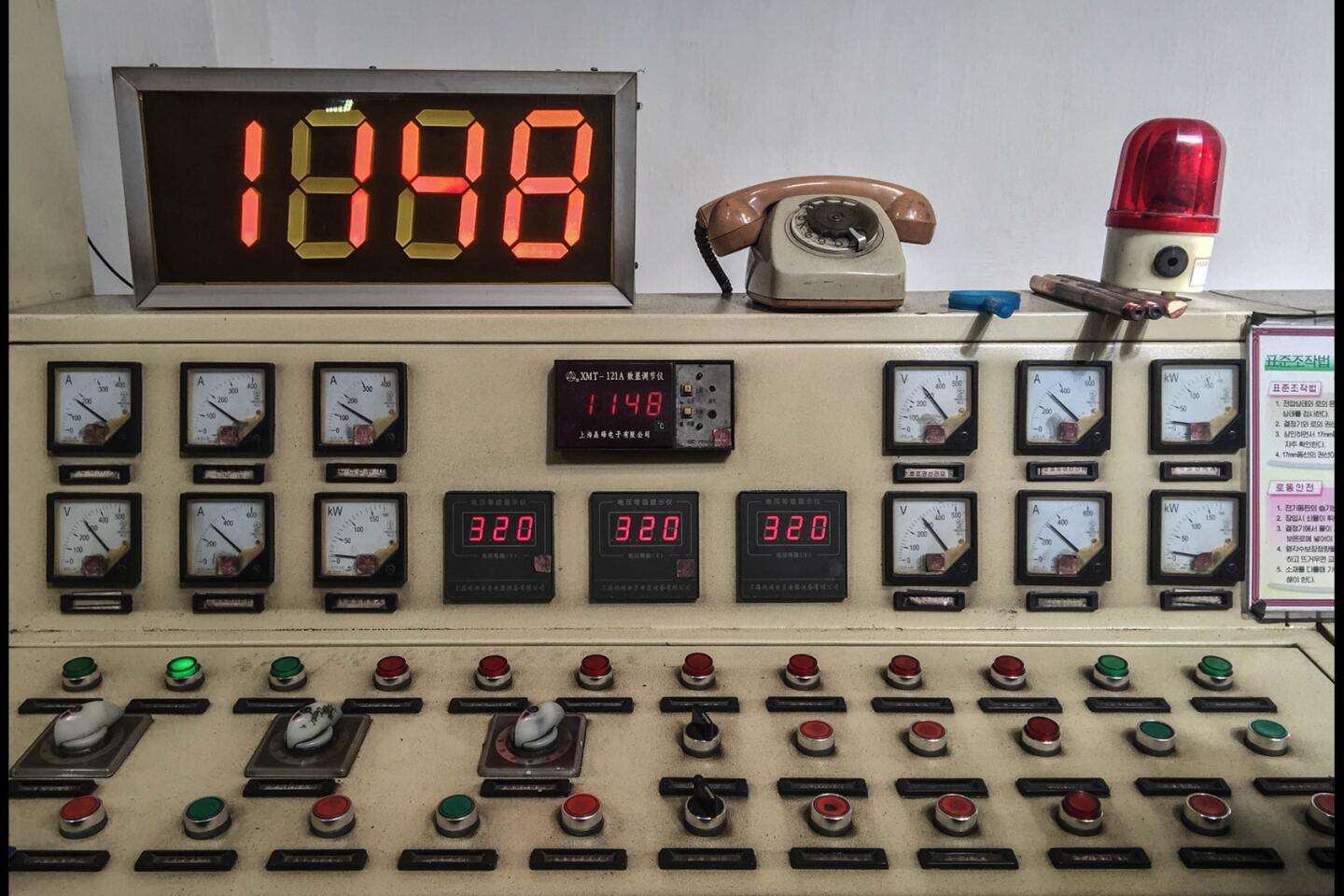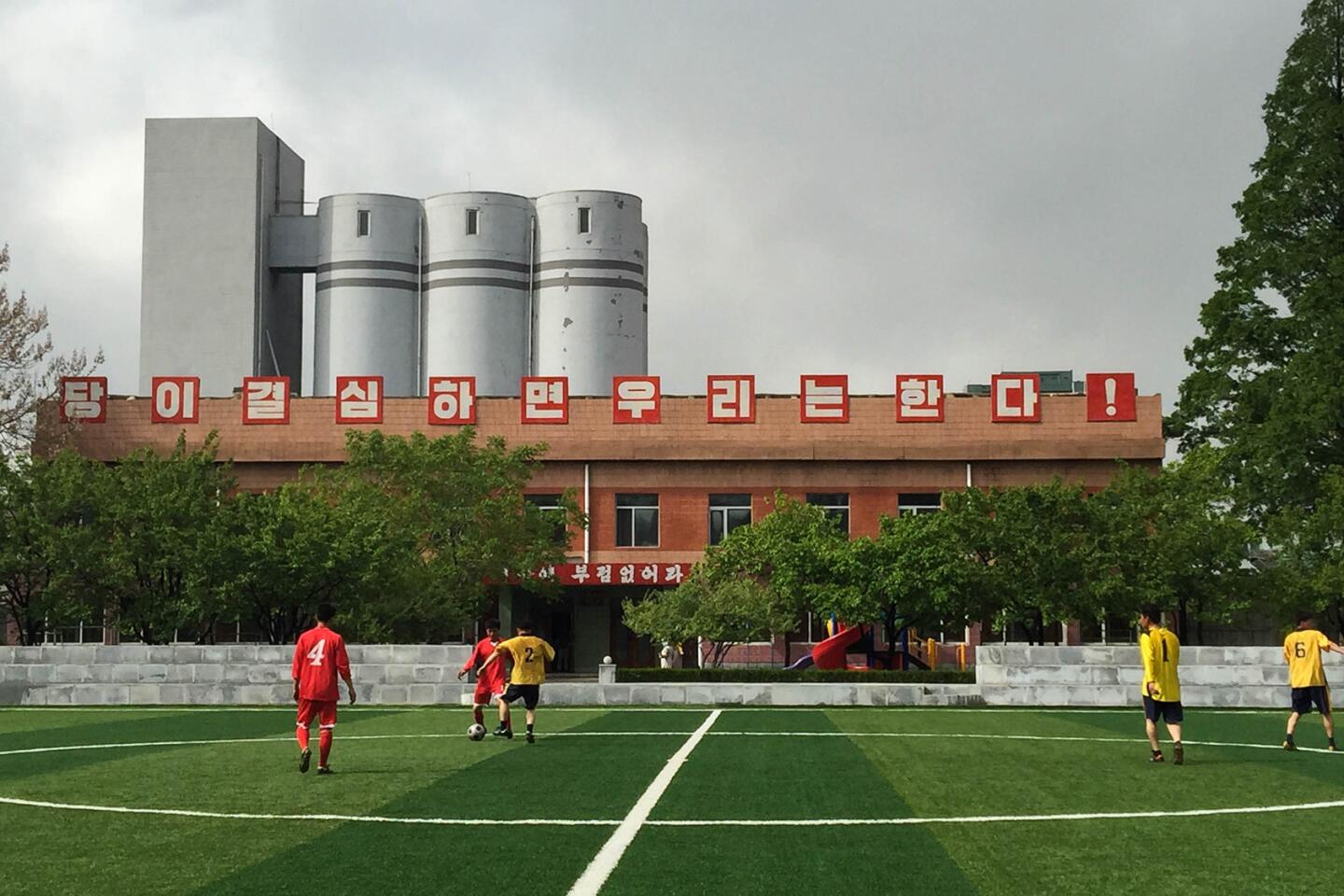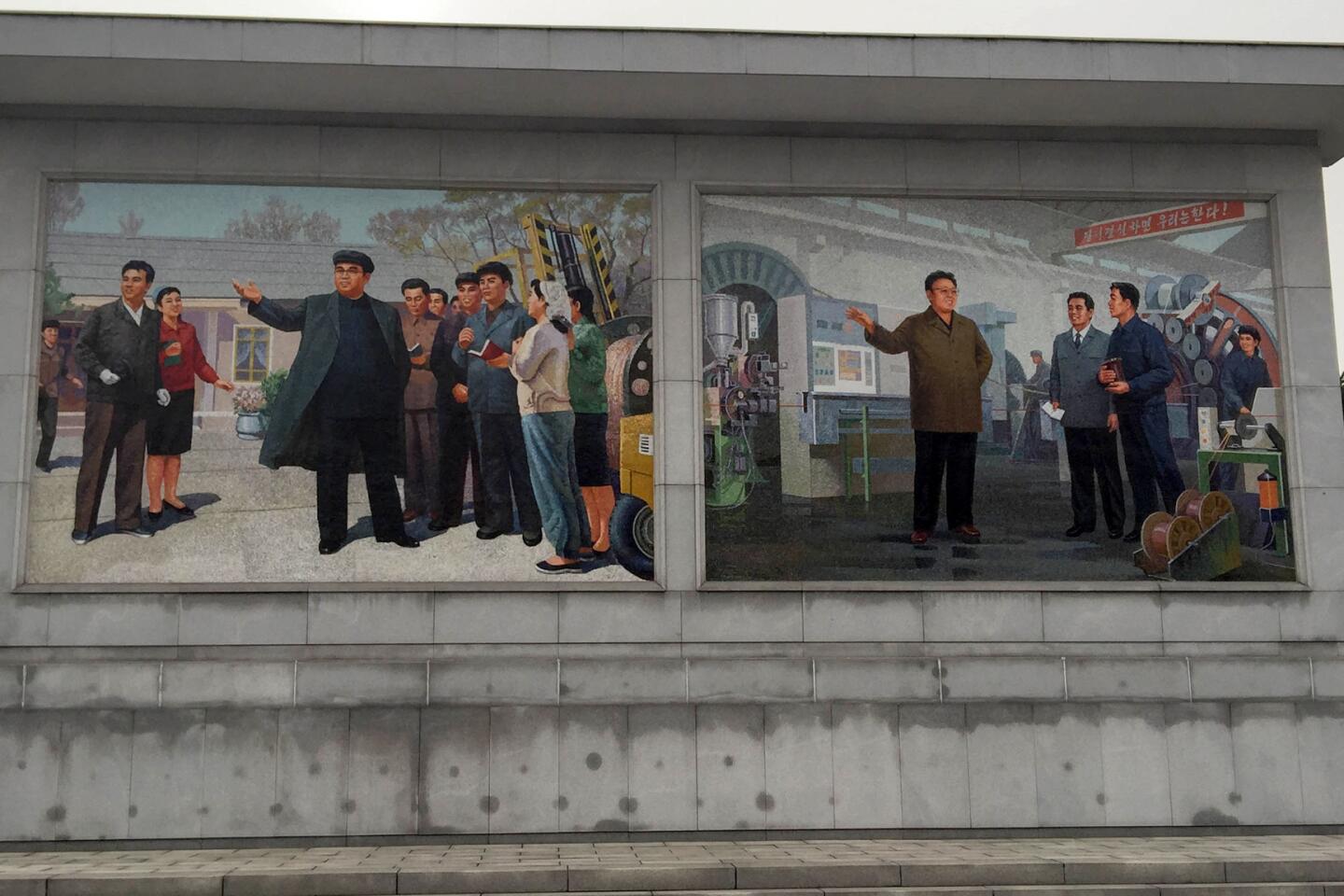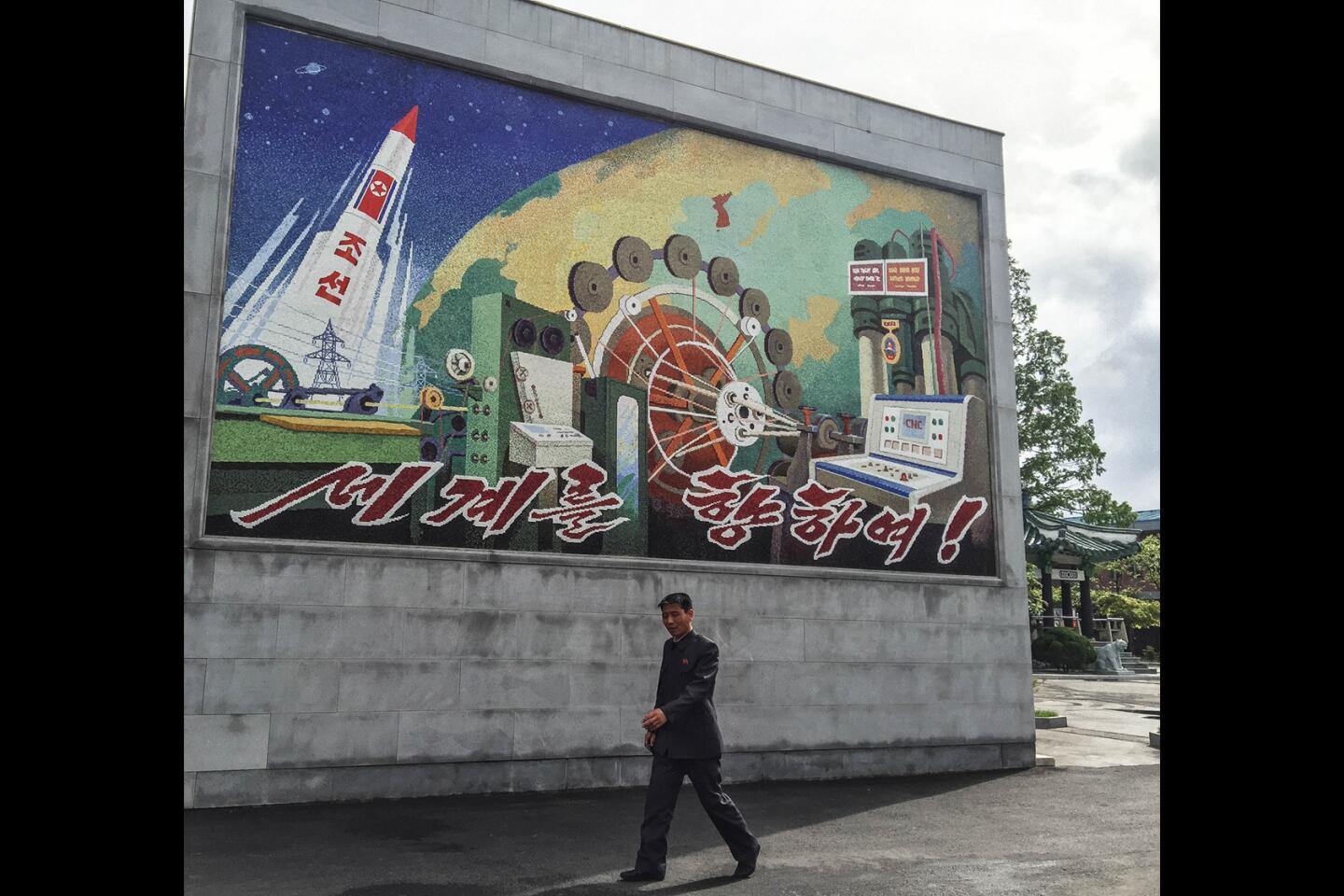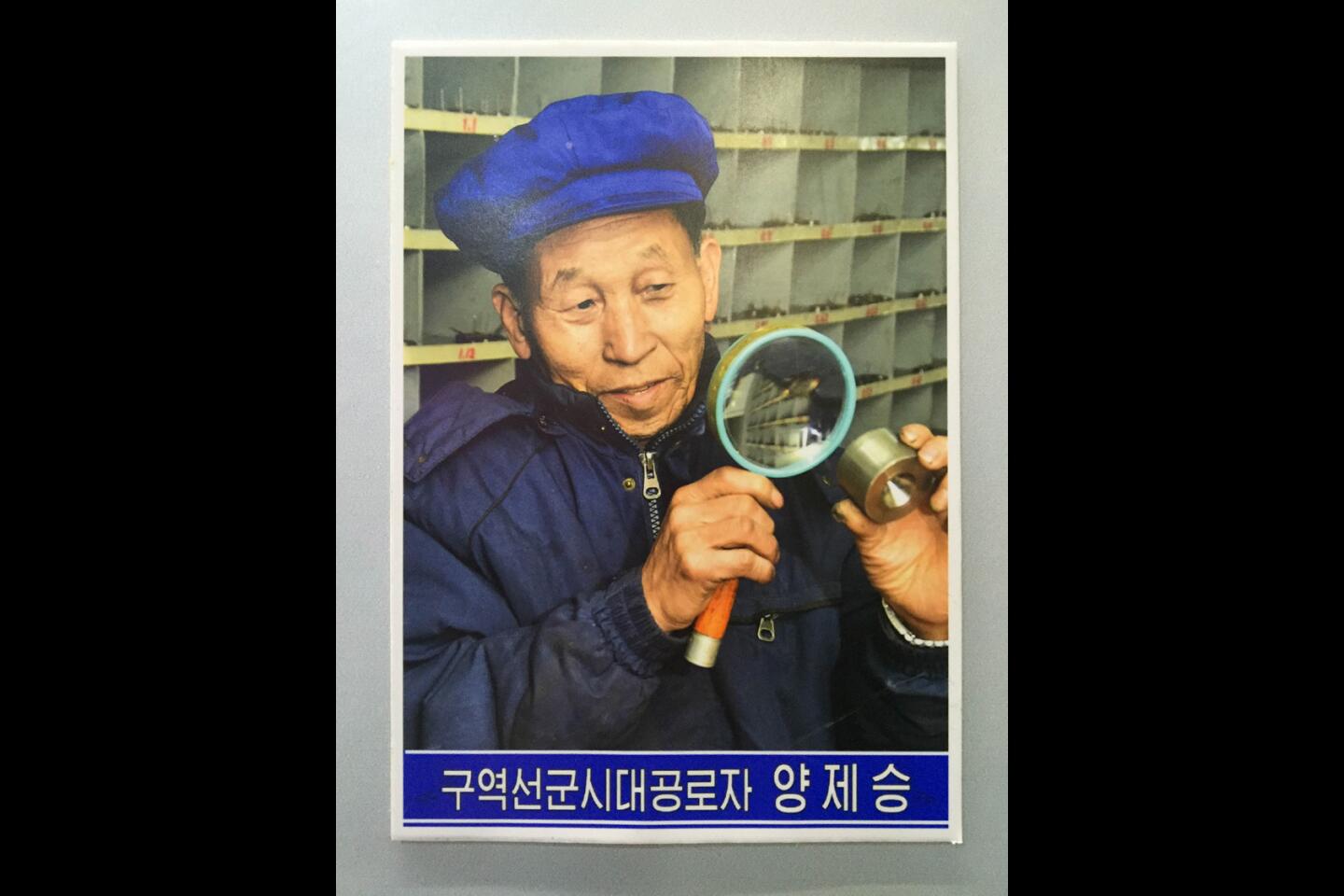North Korean leader unveils 5-year plan for economy, but no radical reforms
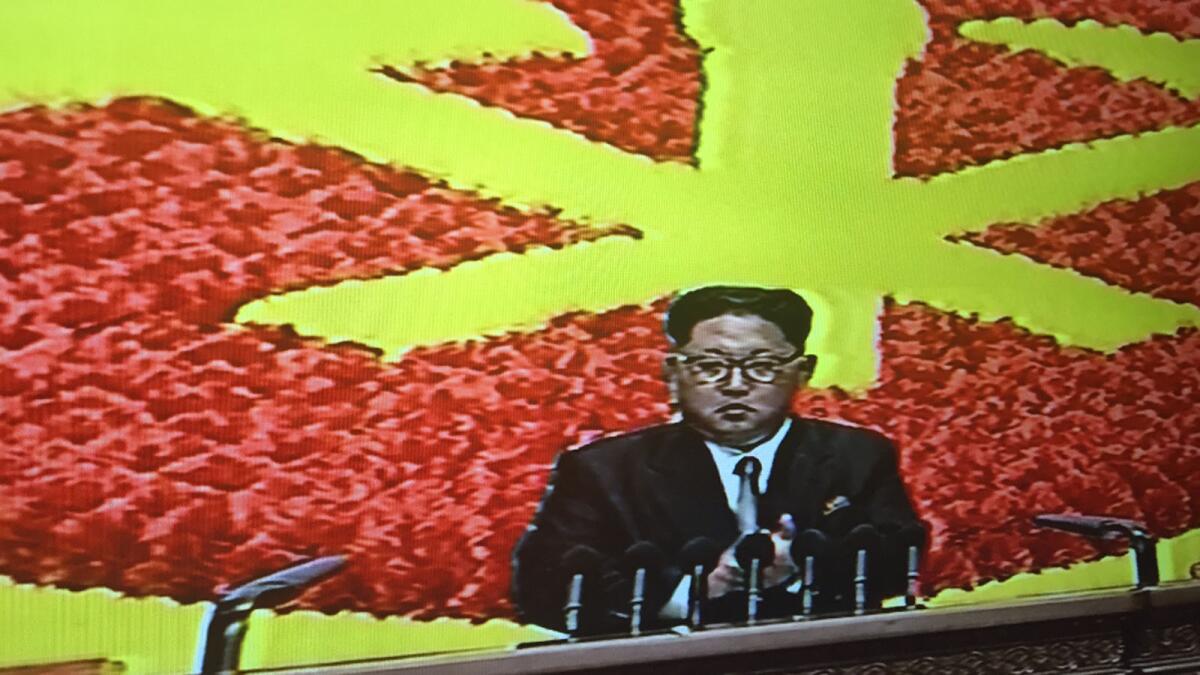
In an image taken from TV, Kim Jong Un addresses the National Party Congress in Pyongyang.
- Share via
Reporting from Pyongyang, North Korea — North Korean leader Kim Jong Un announced the nation’s first five-year economic plan in decades, saying the country must modernize but giving no indication that he was planning market-style reforms to jumpstart the moribund state-dominated economy.
In a speech broadcast on Sunday, Kim gave an overview of his priorities during the second day of the Worker’s Party Congress, the highest level political gathering in the isolated, one-party state. It is the first such meeting in 36 years, and it is seen as a major milestone for Kim in consolidating his rule and establishing a vision for going forward.
Besides emphasizing the economy, Kim vowed that “as a responsible nuclear weapons state, our republic will not use a nuclear weapon unless its sovereignty is encroached upon by any aggressive hostile forces with nukes, as [we have] already declared,” according to a summary of his remarks in English provided by the official Korean Central News Agency. He added that North Korea would “faithfully fulfill its obligation for non-proliferation and strive for the global denuclearization.”
Delivering an hours-long speech in a raspy voice to some 5,000 delegates and alternates at the April 25 House of Culture in the capital, Pyongyang, Kim emphasized the need to solve the problem of providing electric power. The nation has long suffered shortages and even nowadays in Pyongyang – the most well-off city in the country – many residents have power only for three or four hours in the morning, and three or four hours in the evening.
North Korea has significant coal deposits, but Kim said the nation must rely more on renewable sources like hydropower, geothermal and solar. Solar powered streetlights can be seen these days around Pyongyang, and solar panels can be seen hanging from the balconies of apartments throughout the city.
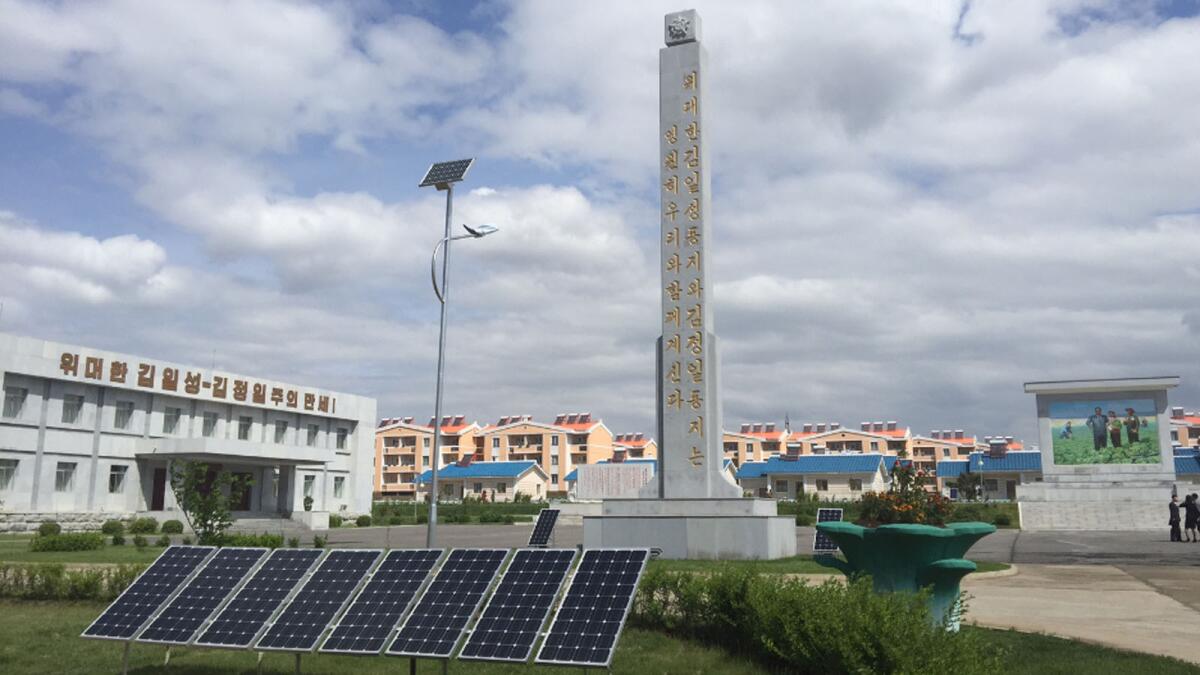
Solar panels in front of a monument at a farm on the eastern outskirts of Pyongyang.
Kim mentioned the need to develop the metal and railway industries, and cited his ambitions to export raw materials like magnesite and graphite around the world. But he did not explain how the country could do that in the wake of the sanctions imposed in March by the United Nations after the nation’s recent hydrogen bomb and missile tests.
In his remarks, which were believed to have been made Saturday but were broadcast on Korean state-run TV Sunday, Kim gave repeated nods to the longstanding North Korean “Juche” ideology of self-reliance in all things. But at the same time, he suggested that he wanted his country to engage more in the international economy. Foreign trade, he said “should be widely developed, and with credibility.”
After collapsing in the 1990s, North Korea’s economy has experienced a rebound of sorts. South Korea’s central bank estimates the nation’s gross domestic product grew about 1.3% in 2012, 1.1% in 2013 and 1% in 2014.
Five-year plans were typical pillars of many socialist countries in the past, and nations including China still draft them. Although a return to five-year plans may be a sign of progress for North Korea, some outside experts said Kim’s announcement doesn’t necessarily portend bold changes.
“Some experts are predicting bold economic reform, as they have been similarly predicting for decades, but they are likely to be disappointed,” said Bruce Klingner, a senior research fellow on North Asia at the Heritage Foundation in Washington. “The Kim regime has periodically allowed some economic changes, but these were never as extensive in scope or duration as predicted. And the regime usually walked them back either as economic conditions improved or it feared losing control over its minions.”
But there have been some nascent signs of change. Last year, more than 450 North Koreans attended workshops on business and entrepreneurship run by a seven-year-old organization called Choson Exchange. “If things go well on the economic front and the leadership feels secure, we may see a tilt towards economic growth,” said Andray Abrahamian, the group’s associate director of research and an honorary fellow at Macquarie University in Australia. “This would necessarily include better business practices, better rules governing business and greater efficiencies in the market economy.”
Choson Exchange has run programs both in North Korea and abroad for North Koreans to help them learn about market principles, teaching them everything from the economics of major infrastructure projects to how to make a budget for a small restaurant. But there are many challenges, said Abrahamian, from sanctions to the shortages of electricity and lack of clarity in laws. “If I’d have to pick one word, though, it would be ‘information.’” he said. “Potential investors find it too hard to conduct research and understand what’s going on in [North] Korea and Koreans are too limited in the breadth of information they can access about the rest of the world.”
Kim also said that North Korea would “improve and normalize the relations” with those countries that respect its sovereignty “and are friendly towards it, though they had been hostile toward it in the past.”
It was the second time in three days that North Koreans were able to hear their leader speak -- still a relative rarity for citizens here. Kim’s father, Kim Jong Il, who ruled from 1994 to 2011, was extremely reclusive and almost never spoke in public.
Kim Jong Un, in contrast, is a more outgoing and garrulous type, and is seen to be molding himself more on the model of his grandfather, Kim Il Sung, the founding father of North Korea.
North Korea has not published economic statistics since the 1960s, making precise calculation of its Gross Domestic Product impossible. But the nation of 24 million is undoubtedly one of the world’s poorest countries. South Korea’s central bank estimated North Korea’s gross national income at $29 billion in 2014. That’s about 1/100th the size of California’s economy.
North Korea has few trading partners; the largest ones are China and South Korea. Last year, they accounted for about 90% of North Korea’s trade. But in February, following Kim’s test of a hydrogen bomb and a rocket launch, government authorities in Seoul decided to close the Kaesong industrial complex.
The facility, six miles north of the demilitarized zone that has separated North and South Korea since the 1950s, opened in 2004 and produced socks, watches and other goods. It was intended as a step toward economic cooperation and reconciliation.
Over its decade-plus history, the park is estimated to have earned North Korea about $525 million, according to South Korean government authorities. The park was built with South Korean investment but used tens of thousands of North Korean workers.
“It appears that such funds have not been used to pave the way to peace, as the international community had hoped, but rather to upgrade its nuclear weapons and long-range missiles,” the South’s reunification minister, Hong Yong-pyo, said at the time.
Stephan Haggard of the Petersen Institute for International Economics estimated in February that Kaesong accounted for about a third of all North Korean trade.
What remains to be seen is whether China will pick up the slack now that Kaesong has been shuttered.
Between January and November 2015, China-North Korea trade volume totaled $4.9 billion, the South Korean state-run Korea Development Institute think tank estimated. That was down 14.8% from the same period in 2014 and the first double-digit year-over-year drop since 2000.
But a Chinese customs official said China’s exports to North Korea actually rose about 15% in the first three months of 2016 compared with 2015, and Chinese imports rose nearly 11%.
Coal has been a key part of cross-border trade. North Korea sent about 20 million tons of coal to China last year, up 27% over 2014, leapfrogging over Russia and Mongolia to become China’s third-largest supplier behind Australia and Indonesia.
However, China’s Ministry of Commerce said in April that because of the sanctions, it would ban most imports of North Korean coal, iron ore, gold, titanium, vanadium and rare earths, although it said that some imports would be allowed so long as they were not tied to nuclear or missile programs.
How it would make that distinction remained unclear, as all coal mining in North Korea is controlled by the state. China also banned sales of jet fuel to North Korea but said civilian aircraft would be allowed to refuel during flights to China.
“China, as North Korea’s principal trade partner for many years, is not going to watch the North disintegrate in spite of Beijing’s discomfort over Pyongyang’s nuclear and missile programs,” Mel Gurto, a professor emeritus of political science at Portland State University and editor-in-chief of Asian Perspective, said in a recent op-ed.
“China’s leaders will do more than previously to enforce sanctions, such as inspection of cargo bound for and incoming from North Korea; but they will do a good deal less than the U.S. wants, especially when it comes to border inspections.”
Special correspondent Steven Borowiec in Seoul contributed to this report.
Follow @JulieMakLAT for news from China
ALSO
Police chase ends in Ontario with motorist jumping to his death
Uber conquered taxis. Now it’s going after everything else
In North Korea and trapped in a real-life version of ‘Waiting for Godot’
More to Read
Sign up for Essential California
The most important California stories and recommendations in your inbox every morning.
You may occasionally receive promotional content from the Los Angeles Times.
